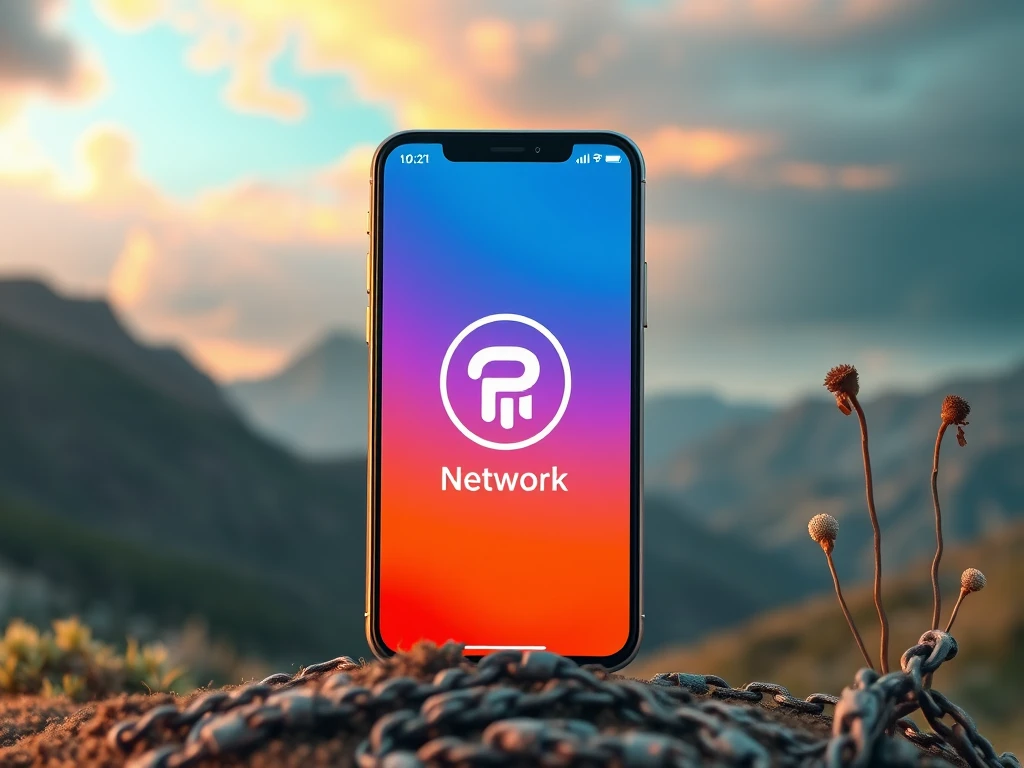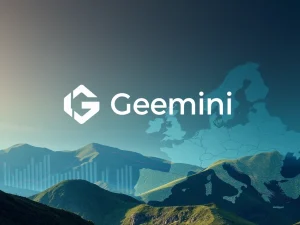Pi Network’s Struggle: Is The Mobile Mining Dream Dead?

When Pi Network arrived in 2019, it offered a compelling vision: the chance to mine cryptocurrency from your phone with just a tap a day. This simple pitch resonated with millions globally, creating significant hype around the potential of ‘free’ mobile mining. The user base quickly grew, fueled by a social referral model that promised early access to the next big digital asset. But years later, many are asking: Is Pi Network dead, or is it just struggling to find its footing?
What Happened to the Pi Network Dream?
The initial promise of Pi Network was straightforward. Users could easily accumulate Pi tokens (PI) by engaging with a mobile app daily. The project outlined a clear roadmap: mobile mining, followed by a testnet, KYC verification, and eventually, a full open Pi Network mainnet allowing for trading and real-world use. However, the journey from mobile app to a functional blockchain network proved challenging and significantly delayed.
After years of waiting, the Pi Network finally opened its mainnet to external trading in early 2025. This should have been a major milestone, but it was far from smooth. A significant hurdle was the Know Your Customer (KYC) process, which became a bottleneck, preventing many users from migrating their accumulated balances. Millions who had diligently tapped the app for years found themselves unable to access the tokens they believed they had mined.
Then came the market reality. When Pi first became tradable on some external platforms, its price saw an initial spike, reaching close to $3. But this early surge was short-lived. As users who could access their tokens began selling, and without substantial real-world utility, the Pi Network price saw a sharp decline. Within months, the value dropped significantly, erasing a large portion of the initial market excitement. The lack of established use cases means you still can’t widely spend Pi, limiting its practical value.
Why Did Skepticism Grow Around Pi Network?
As the project progressed slowly, questions mounted within the crypto community. Several factors contributed to the growing skepticism:
- Mainnet Delays: Launched in 2019, the promise of an open mainnet took six years to materialize. This prolonged waiting period tested the patience of early supporters.
- Centralized Control: Despite promoting decentralization, the Pi Core Team retains significant control over network nodes and the majority of the token supply. This contradicts core blockchain principles for many users.
- Lack of Transparency: The project has been criticized for vague documentation, unclear tokenomics, and a lack of insight into token distribution and supply control, making it difficult for outsiders to assess its health.
- Exchange Issues: While listed on some platforms like OKX and Bitget, Pi isn’t on major exchanges like Binance or Coinbase. Users have reported difficulties withdrawing tokens from listed exchanges, raising concerns about liquidity and platform reliability.
- Questionable Volume: The initial high trading volume quickly collapsed, leading some to question if the early demand was genuine or influenced by speculation or other factors.
- User Lock-in: Many users remain unable to access or use their tokens due to KYC issues or limited spending options, leaving them effectively trapped with illiquid balances.
Is Pi Network a Scam, or Just a Difficult Journey?
Defining Pi Network is complex. It doesn’t fit the typical scam model where users are asked for upfront investment. The entry barrier is low – you just need to download the app and mine Pi crypto by tapping a button daily. This accessibility helped it attract millions.
However, certain aspects raise concerns. The heavy reliance on referrals to boost mining rates resembles multi-level marketing structures. Additionally, the app’s monetization through ads and the requirement for extensive personal data via KYC introduce different forms of ‘payment’ from users – their attention and information.
While not a clear-cut fraud for everyone, the combination of operational opacity, aggressive user acquisition tactics, and the method of monetization has led prominent figures in the crypto space to voice skepticism regarding Pi Network’s legitimacy and long-term viability.
Can Pi Network Recover?
The path forward for Pi Network is challenging. To regain trust and momentum, the project needs to address fundamental issues:
- Increase Transparency: Open-sourcing the code and providing clear tokenomics would build confidence.
- Develop Real Utility: Integrating Pi into functional applications or payment systems would give the token practical value beyond speculation.
- Pursue Broader Listings: Listing on major, reputable exchanges is crucial for liquidity and price discovery, though this requires addressing the concerns that currently prevent such listings.
- Embrace Decentralization: Moving towards decentralized governance and reducing core team control would align the project more closely with blockchain principles.
Since the Pi Network mainnet launch, the project has faced significant price drops and waning user engagement. Rebuilding momentum is difficult in the fast-paced crypto world. Without substantial changes and clearer progress on utility and decentralization, Pi Network risks becoming a footnote in crypto history, known more for its massive user acquisition than for building a functional, valuable ecosystem.
Summary: The Future Remains Uncertain
The Pi Network journey highlights the gap between ambitious promises and the complex reality of building a decentralized network with real utility. What began as an exciting opportunity to mine Pi crypto easily has evolved into a project facing significant challenges regarding transparency, control, utility, and market perception. While millions still hold Pi tokens, the ability to use or trade them remains limited for many. The future of Pi Network hinges on whether the core team can overcome these hurdles and deliver on the long-awaited potential, or if the project will fade, leaving its large user base with unfulfilled expectations.









